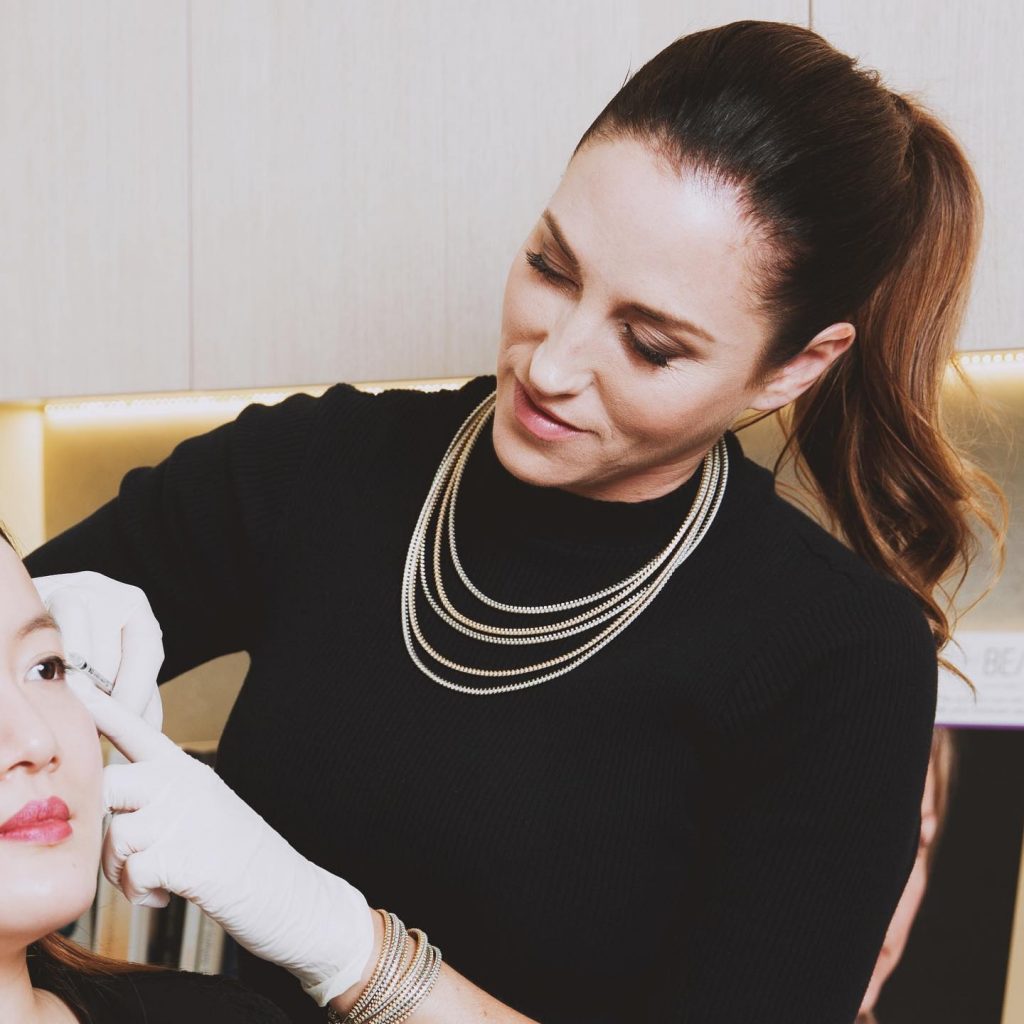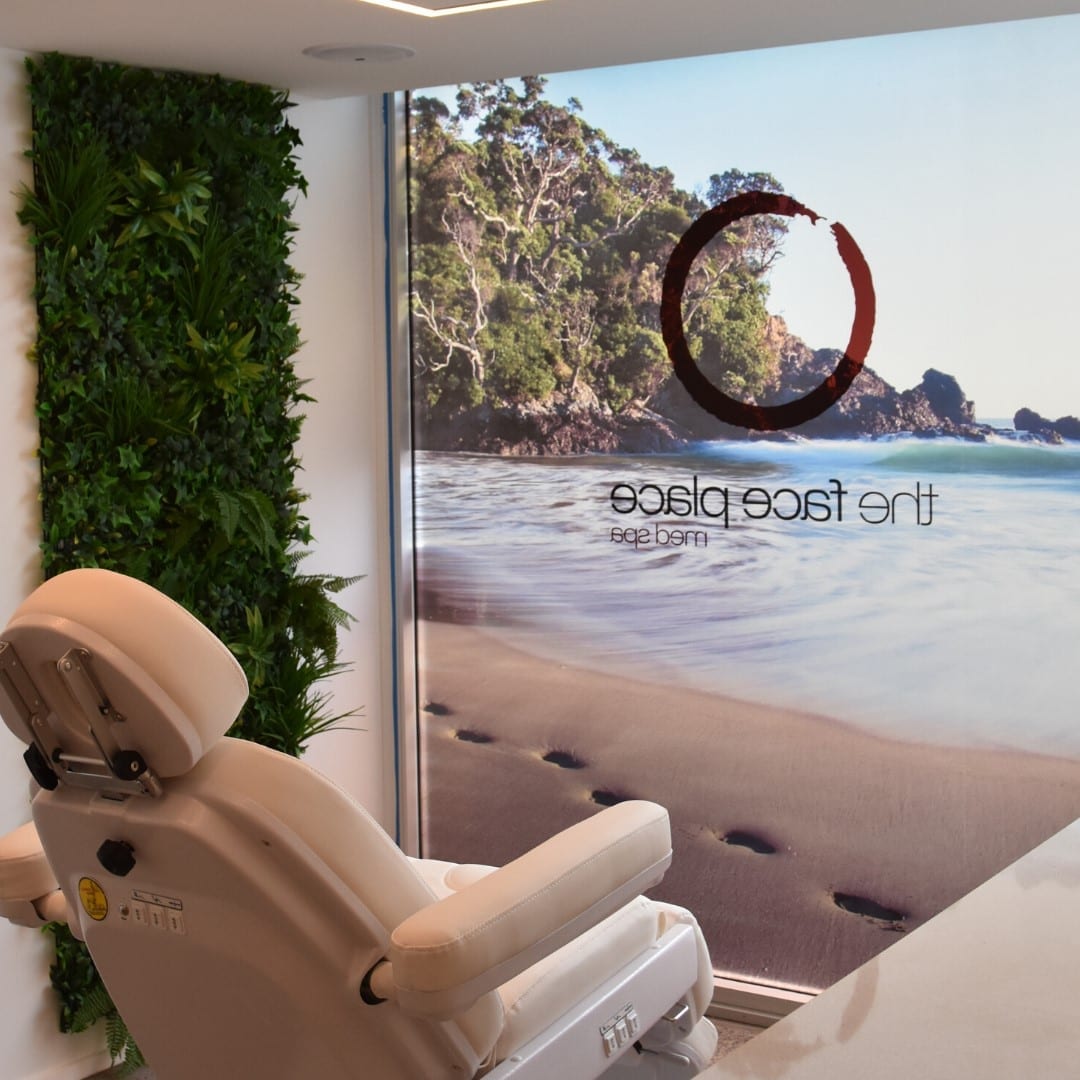In the name of beauty, though I was admittedly a touch hesitant, I had to lose my Botox virginity and I’m proud to say that I’ve been deflowered and most definitely not devalued. I left my face’s fate in the hands of “Botox Queen” of New Zealand and I was confident in her abilities to help me reach one of my life goals – being able to roll out of bed looking beautiful sans makeup. Though that may seem like an unreachable and ridiculous goal, together with prescribed skincare, religious sunscreen application and other skin treatments down the line, I firmly believe that this dream can be achieved.
For my first step in this, for lack of a better word, ‘journey’, I received Botox in my jaw from the best and most expensive Doctor in New Zealand: Dr. Catherine Stone, the first doctor in Australasia to start working full-time with Botox over 15 years ago. She’s the founder of The Face Place MedSpa where they perform non-surgical Cosmedicine with a large expert team to help people achieve natural-looking results. Last year, they won ‘Best NZ Aesthetic Clinic’, so it’s safe to say that they know what they’re doing. If someone was going to stick a needle in my face, I needed to know everything about it and of course, bust some myths along the way for my peace of mind. Dr. Catherine Stone was patient and nice enough to answer all my questions, which I’m sure, will satisfy anyone’s curiosities about this infamous yet mystical procedure.
This is the big question – what exactly does Botox do?
Botox is a prescription medicine which can be used to precisely relax certain muscles and reduce their ability to create lines, spasm or tension in the face or body. Botox treatments have been used for over 30 years, with no serious or long term effects in the very tiny doses used cosmetically. Botox works specifically on a neurotransmitter – or messenger – called acetylcholine, to reduce the messages sent from the nerve ending to muscle. The same acetylcholine is the messenger from the nerve ending to the sweat glands, which is why it is also very effective in treating excessive sweating.
Cosmetically, we create many of the lines and wrinkles with our repeated facial expressions. Every time you frown or raise the eyebrows, you bang the skin together, which breaks down the supporting collagen fibres in your skin. When we are younger, we can easily repair the damage, as we have lots of healthy active skin cells that quickly repair the damage. As we age, the skin cells get lazy and we start to do more damage than what can be repaired, so the lines to deepen. Botox prevents the lines from deepening and can help the lines soften over time, by reducing the damage from the muscles banging together – giving the skin the ability to repair.
To ensure natural results, we use lower doses more frequently. An average grumpy frown treatment is likely to last about 3 months, but it will depend on the dose we use, the strength of your muscles, and the area treated. There is an art to Botox treatments, with placing it into the right muscle, right place, and right dose. There are over 50 different muscles in the face, which usually sit in slightly different places for different people. This is why a thorough consultation and assessment is important. We start with the lowest dose we think will give you a good result, it is very easy to put more in and increase the dose if needed. Many injectors just put high doses in, which can ‘freeze’ the muscle and make people look weird or frozen. It does not have to be like that – our aim is to ‘turn down’ the activity of the muscle so that it doesn’t create the lines, but you still look natural – just fresher and more relaxed.

Let’s bust the myths – what are the most common myths about Botox that are untrue?
My favourite one is that ‘your face will collapse if you stop having Botox’! In fact, the opposite is true: with repeated treatments, the lines usually continue to soften out as you provide more space for the skin to repair. We also start to train the muscles not to make the lines. We have a lot of ladies who stop having treatments while
pregnant or breastfeeding, and if they’ve had Botox treatments regularly for several years beforehand, they usually find they still look better than when they started having Botox, even if they have stopped for a couple of years! On the other hand, if you have one treatment, and decide it’s not your thing, it will completely go back to normal over about 3-6 months.
Botox addiction? Botox is not physically addictive, but be warned, it can make you feel good! Some people really like how good it makes them look (and feel more confident), and want to have more – just like having your hair or nails done. Some people do ‘go overboard’ because of this, but a good clinician will advise if you are starting to go ‘too far’ – and they should say “No” to you! Another crazy myth is that it comes from cows and is a poison – I think people get confused with the name, and call it a ‘bovine toxin’. While an older form of collagen injections used to come from cows, Botox itself is a naturally-occurring, non-animal protein derived from a bacteria. The bacteria itself is dangerous if eaten in large amounts, but Botox is just one of the proteins it produces, and is very safe when used precisely into the treatment areas in tiny doses. The calculated dangerous dose for a 70kg human is about 3500 units. This equates to 35 vials which is worth $60k-$100k! The average dose for a neck spasm is 700 units and an eye spasm is 300-400 units. An average frown line uses about 20 units, and an area like a gummy smile or upper lip treatment might be 2-4 units which is usually less than $100.
My final favourite myth is that Botox will make you look plastic. In high doses, it can ‘freeze’ the muscle and make a face look stiff and expressionless – and let’s be honest, it looks a bit weird. However, when used artistically by an experienced injector, the aim is to ‘turn the muscle down’ without ‘turning it off’ – giving a fresher, more relaxed and natural look. The ‘plastic’, white, shiny look to the skin can usually come from too much laser resurfacing, deep peels or even repeated fractional treatments such as Fraxel, which can all create microscars in the skin – scar tissue is usually whiter, shinier and denser than normal skin and gives the same ‘plastic’ appearance. We prefer treatments that build the skin up and provide good health and nutrition for the skin. A healthy skin is a beautiful skin!
When should one start having botox?
Can it be used in a preventative way? Botox helps to relax the muscles that create lines, and so the best time to start using Botox treatments is likely to be when you first start noticing the lines forming. If you start early, you’ll usually find that the lines soften very quickly, and if you continue with treatments you may not develop the lines. There is a definite trend for men and women starting to use these treatments in their 20’s and 30’s, often for prevention, or when they first start to notice the changes.
How can botox be used for jaw slimming?
Jaw-slimming with Botox is a very popular treatment in China, and has been used “off-label” in NZ for over 13 years. Usually a wide, square jaw can be treated very effectively with Botox to relax the Masseter muscles – the big chewing muscles you can feel at the sides of your jaw if you bite your teeth. People with big masseters will often clench or grind their teeth, chew a lot or will naturally have very strong muscles. The muscles get bigger with more ‘exercise’ in the same way that your body muscles get bigger by working out at the gym. Using Botox to relax the Masseter muscles means that they don’t exercise as hard, and will slowly soften and shrink down over about 4-8 weeks. For example, if you had your arm in a cast and could not exercise it, the muscles get smaller, but are still there, and can/ will get bigger if you start exercising again. One of the bonuses of treating the jaw is that it will often reduce the pain in the jaw and the damage to the teeth with teeth grinding/clenching.
Can it be used for non-cosmetic reasons?
Botox can be used for over 300 different medical conditions, so cosmetic use is actually only a small fraction of the available treatments. I first used Botox nearly 20 years ago, in cerebral palsy babies, where we use it in their legs to help them walk. In babies as young as 18 months old we used about 300-400 units of Botox. At The Face Place, we use Botox treatments for quite a few medical treatments: with great success for excessive sweating (almost 100% success rate!); tension headaches and migraine; minor forms of facial spasm; facial asymmetry like Bell’s palsy; and for teeth clenching/grinding. We have also successfully used it for Repetitive Stress Injury (RSI) in the forearm, hand and shoulder.
How much does it cost?
When we opened The Face Place in 2001, we were the first clinic in NZ to start charging for what we use. This meant we were able to ‘tailor’ the treatments to each person in terms of the dose they wanted, how much movement they liked and what areas they wanted to treat. An area like the upper lip or ‘sad’ mouth corners might only require 4-6 units (often less than $100), while areas that need higher doses like the frown or jaw muscles might be $250-700, or occasionally more, depending on the strength of the muscle, who is providing the treatment, and the final result desired. It’s great to see that this is now the most common way of charging for Botox in NZ. While in general, NZ has a very good cosmetic medicine industry, it’s important to be careful of ‘cheap’ Botox and its providers. Visit the best practitioners, do your own thorough research, expect a thorough consultation (if not, then leave – a cookie cutter approach to Botox is never a good approach) and develop a long lasting, trusting relationship with an expert who makes you feel comfortable, informed and, most importantly, listened too.
Words: Sophie Chung Images: The Face Place, Supplied

